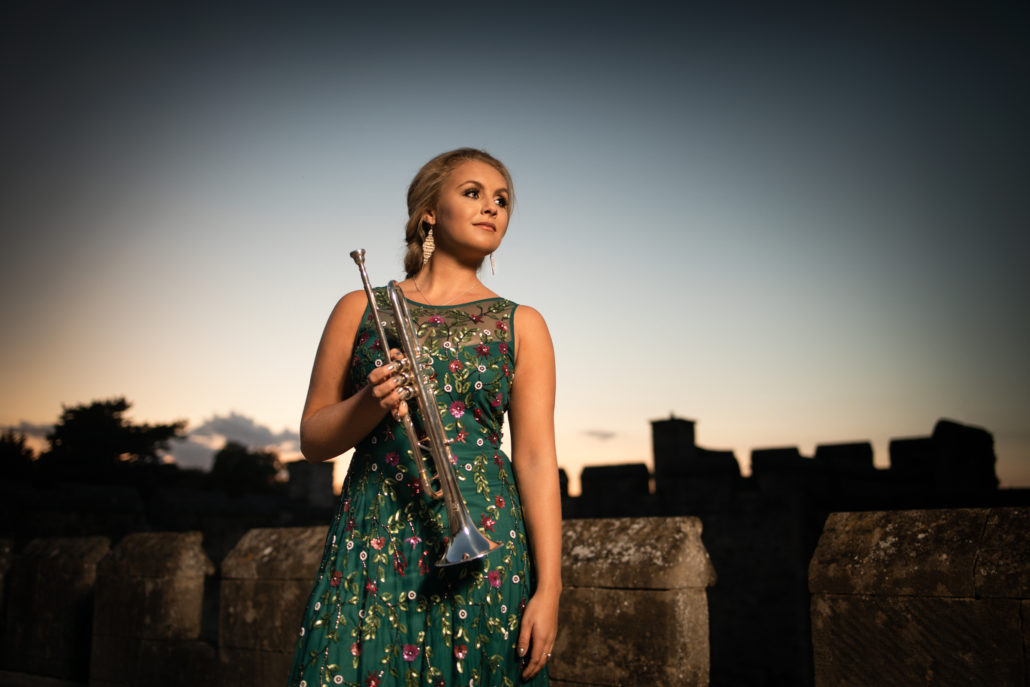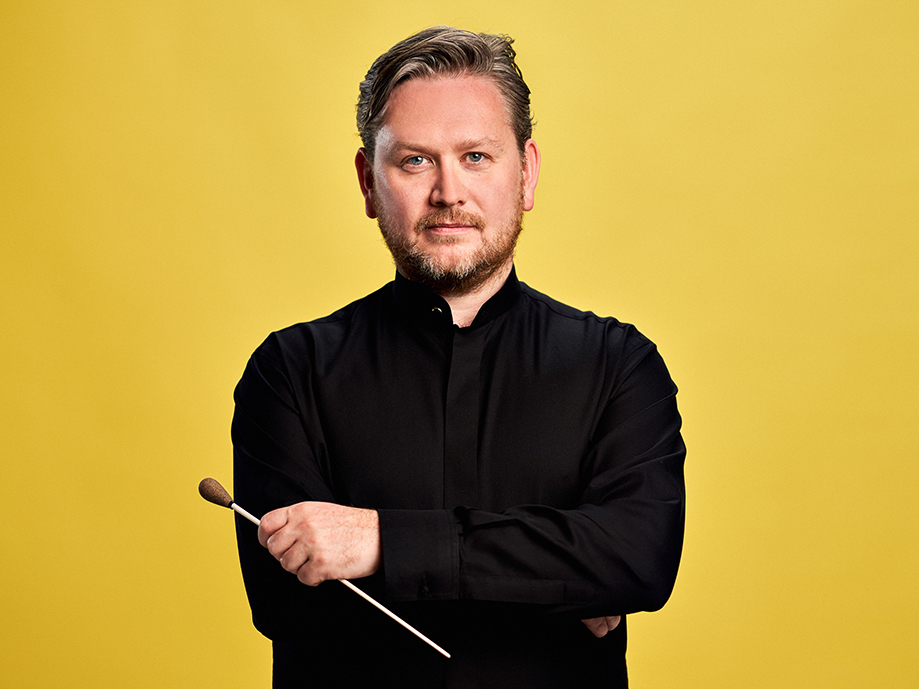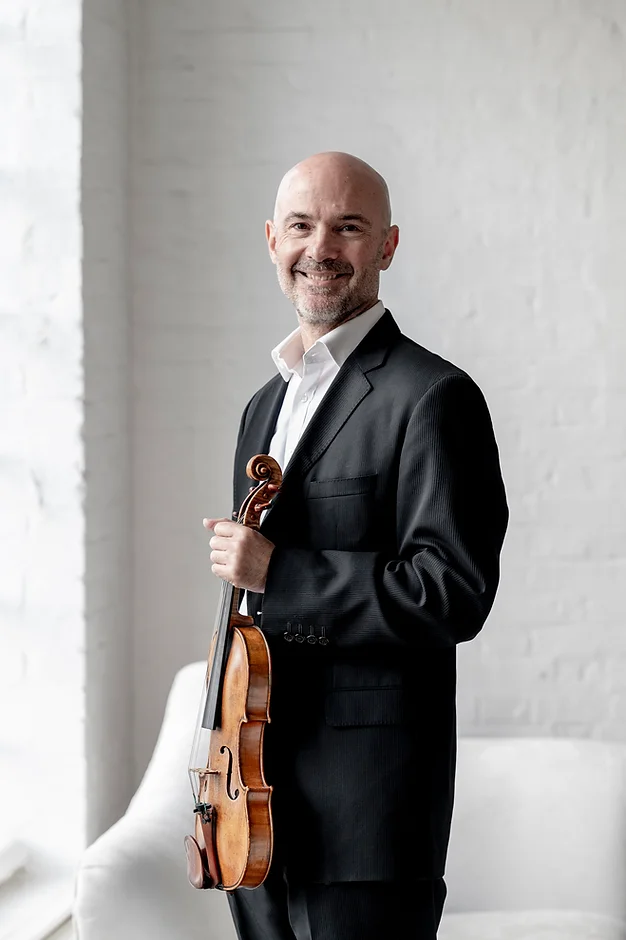
From Ferris wheels to international concert hall, this concert tells the centuries-long story of the Fair Field and our place in its history

From Ferris wheels to international concert hall, this concert tells the centuries-long story of the Fair Field and our place in its history
The Fairfield Halls are built on the site of Croydon’s old fair field and the music is rather reminiscent of a huge switchback ride in three-four time interspersed with a sprightly two-four prelude which seems to depict the general jollity of the fair ground. The main tune then expands to three-two time making for a grandiose finale. The general structure of the music is based on the chord of the major seventh which produces an interesting hurdy-gurdy effect.
They say that good things come in small packages. A handwritten note, a sampler of Belgian chocolates, or a carefully selected piece of fine jewelry, each makes a lasting impression. Samuel Coleridge-Taylor’s Novelletten for strings, a brilliantly crafted set of short movements for strings, tambourine, and triangle, fits into this category as well. Written in 1901 and 1902, the work’s title may have been inspired by Robert Schumann’s Novelletten, op. 21, a set of piano miniatures composed in 1838. Coleridge-Taylor, a gifted violinist, wrote his four Novelletten for strings, infusing romantic sentimentality with a coloristic exploration of the modern string orchestra. Novelletten no. 2 contrasts two dance-like sections, one duple and one triple in an overall ABA form. No. 3, labeled “Andante con moto,” features a solo violin, revealing an emotional virtuosity and speaking to the composer’s love for his instrument. The fourth Novelletten, though intended as the finale of the set, works equally well as an opening number—its excitement preparing an audience for an evening of special music. The work was first dedicated to Miss Ethel Barns, a composer and virtuoso violinist who performed and premiered many of Coleridge-Taylor’s works, including the subsequent violin-piano arrangement of Novelletten. The orchestral version must have been a favorite of the composer, for even though his publisher Novello lost money printing the piece, Coleridge-Taylor programmed the set repeatedly on concerts he conducted throughout his career.
Samuel Coleridge-Taylor (1875–1912) was the son of a white, English mother and a Sierra Leonean medical student who met in London. Young Samuel, raised in his grandfather’s household by his single mother, picked up the violin quickly, showing musical talent at a young age. A scholarship at age fifteen led him to the Royal College of Music, where he eventually changed his major to composition. He studied with the great Charles Stanford Villiers, at times receiving more attention from his teacher than fellow students Gustav Holst and Ralph Vaughan-Williams. The young composer finished college with a publisher in place and a number of compositions in print. In the late 1890s, Coleridge-Taylor became increasingly interested in his own heritage and the concept of Pan-Africanism, which led him to study the history of Africans in America. He later noted that one of his lifetime highlights was meeting W. E. B. DuBois at the first Pan-African Conference in London in 1900. In 1898, he composed a cantata titled Hiawatha’s Wedding Feast that found instant international success. A group of African-American singers in Washington, DC founded the Coleridge-Taylor Choral Society, finding inspiration in the black composer’s music. They invited him to the United States, where he made three tours in 1904, 1906, and 1910. On the first trip, he conducted his own works with the Marine Band, and was invited to meet Theodore Roosevelt in the White House. Being forewarned of the discrimination he might face in U.S., Samuel wrote to his sponsor: “I can assure you that no one will be able to stop me from paying you my long deferred visit. As for prejudice, I am well prepared for it. Surely that which you and many others have lived in for so many years will not quite kill me… I am a great believer in my race, and I never lose an opportunity of letting my white friends here know it.”
Back in Britain, Coleridge-Taylor carved an artistic niche for himself. He led the London Handel Society from 1904 through 1912 and served as composition professor at London’s Guildhall School of Music and Trinity College of Music. Throughout his career, he received constant support from his wife, Jessie Sarah Fleetwood Walmisley. The two met while studying at the Royal College of Music and were later married in 1899, despite her family’s objections. Although publicly she remained in the background while her husband pursued his career, Jessie certainly had a voice in many of his artistic decisions. Upon the composer’s untimely death due to pneumonia at age 37, Jessie directed that the love letters she and Samuel had written to each other many years earlier be “scattered into his coffin.”
(c) Dr. K. Dawn Grapes, Fort Collins Symphony
JOSEPH HAYDN (1732-1809)
Trumpet Concerto in E flat
I Allegro
II Andante
III Finale: Allegro
Surprisingly, in view of his pre-eminence as a composer of symphonies, Haydn wrote relatively few concertos, and those he did complete are not important parts of his output. Only this trumpet concerto and the two for cello are regularly performed today; Haydn’s relative neglect of an important 18th century form is probably a reflection of the fact that, unlike Mozart, he was not himself a virtuoso performer.
When Haydn did write concertos it tended to be because he was inspired by the playing of a particular musician, and that was certainly the case with this work, written, as was Hummel’s, for the outstanding trumpeter Anton Weidinger. Weidinger was an inventor as well as a performer, and devised a trumpet which was able to play a much wider range of notes with ease compared to other instruments of its day.
Haydn wrote his Trumpet Concerto on his return to Vienna in 1796 from his second visit to London. It is in the conventional three movements of the classical form, and shows that Haydn gave Weidinger plenty of opportunity to show off the chromatic possibilities of his new instrument and his great virtuosity.
© Ian Lush
WOLFGANG AMADEUS MOZART (1756-1791)
Symphony No.40 in G minor, K.550
I Molto allegro
II Andante
III Menuetto: Allegretto
IV Finale: Allegro assai
By the summer of 1788, Mozart was no longer a novelty in Vienna. After seven years of living there, he still had no court appointment commensurate with his needs and abilities, and money was increasingly difficult to find. It was under these strained circumstances that Mozart composed the three symphonies that would define the shape of the symphonic form for the next century: No. 39 on June 26, No. 40 on July 25 and No. 41 (Jupiter) on August 10.
Entire books, hundreds of book chapters and articles, and thousands of programme notes have been written about these symphonies. Symphony No. 40 has long been considered a manifestation of Mozart’s most personal voice, full of passion and seriousness. The symphony’s characteristic richness is accented by Mozart’s ingenious use of two horns pitched in two different keys, both of them high. This doubled the normal number of notes possible in his time on the limited scale of the horn, enabling the horns to contribute to the harmony instead of being silent.
The symphony opens with an intensely restless and dramatic theme on the strings, which leads to a gentler second theme, shared with the wind. The central development traces the opening figure through various keys, introducing a strongly contrapuntal element. The recapitulation is reached through a descending woodwind sequence, with the second theme now assuming particular poignancy in the minor key.
The Andante, in E flat, opens contrapuntally with successive entries. Despite the major key, an elegant pathos is created by the dissonance and the persistent underpinning of rhythmic repeated notes. The Minuet contains yet more counterpoint, with an accumulation of voices that sound adversarial, with rhythms askew in a rather dark setting. The tranquility of the Trio is shattered by the return of the Minuet.
The Finale’s opening, ‘Mannheim rocket’ (an ascending arpeggio figure), reverses the usual loud–soft dynamics by answering quiet with force. The movement’s already tenuous sense of tonality is shaken even further when it modulates from G minor to C sharp minor – the most distant key.
As many commentators have noted, this work is without peer in its clarity and balance. It is emotionally charged but never stormy. The relentless rhythm propels, but does not force, the flow. Daring harmonies make an appearance, but, within its classical framework, Mozart gently leads the way to the overt musical emotional expressions to come in the next century.
© Elizabeth Boulton
Violin 1
Simon Blendis
Nicoline Kraamwinkel
Ann Criscuolo
Martin Smith
Nemanja Ljubinković
Hatty Haynes
Violin 2
Maren Bosma
Gemma Sharples
Jayne Spencer
Lucy Waterhouse
Rosemary Henbest
Viola
Sophie Renshaw
Christine Anderson
George White
Christopher Pitsillides
Cello
Leo Popplewell
Sarah Butcher
Daisy Vatalaro
Double Bass
Catherine Elliott
Melissa Favell-Wright
Flute
Thomas Hancox
David Cuthbert
Piccolo
Emma Williams
Oboe
Christopher O’Neal
Emily Stephens
Clarinet
Marie Lloyd
Lewis Graham
Bassoon
Sarah Burnett
Emma Harding
Horn
Andrew Budden
Martin Grainger
Laurie Truluck
Jason Koczur
Trumpet
Alan Thomas
Peter Wright
Simon Gabriel
Trombone
Andrew Cole
Jeremy Gough
Ian Fasham
Tuba
Martin Knowles
Timpani
Benedict Hoffnung
Percussion
Scott Bywater
Rachel Gledhill
Glyn Matthews
Chief Executive Flynn Le Brocq
Concerts
Artistic Projects Manager Sophie Haynes
Orchestra Manager and Fixer Jason Weir
Operations & Library Alex Mackinder
Development
Business Development Manager Ceri Sunu
Fundraising & Operations Peter Wright
Fundraising Consultant Paul Hudson
Partnerships Director Trudy Wright
Marketing
Senior Marketing & PR Manager Anna Bennett
Digital Marketing Manager Charles Lewis
Marketing & Events Coordinator Jessica Peng
Finance
Bookkeeper Debbie Charles
Leader sponsored by Debbie Beckerman & Keith Jones
Leader sponsored by Anonymous
Co Leader sponsorship vacant
First Violin 3 sponsored by Liz and Alistair Milliken
First Violin 4 sponsored by John and Rosalind Crosby
First Violin 5 sponsored by Christine Robson
First Violin 6 sponsored by Della Brotherston
First Violin 7 sponsorship vacant
First Violin 8 sponsorship vacant
Principal Second Violin sponsored by Geoffrey Shaw
Second Violin 2 sponsored by The Angel Family
Second Violin 3 sponsored by Keith Ball
Second Violin 4 sponsored by Alastair Fraser
Second Violin 5 sponsorship vacant
Second Violin 6 sponsored by Catherine Shaw
Principal Viola sponsored by Mark and Vanessa Petterson
Co Principal Viola sponsored by Raymond Calcraft
Viola 3 sponsored by Gill Cox
Viola 4 sponsored by Stuart & Joyce Aston
Principal Cello sponsored by Anonymous
Co Principal Cello sponsored by Jeffrey and Sophie Prett
Cello 3 sponsored by Gillian Noble
Cello 4 sponsored by Richard Morgan
Cello 5 sponsored by Colin and Helen Snart
Principal Double Bass sponsored by John Clarke
Co Principal Double Bass sponsored by The Bristow Family
Principal Flute sponsorship vacant
Sub Principal Flute sponsored vacant
Principal Oboe sponsored by Pat Sandry
Co Principal Oboe sponsored by Sean Rourke
Sub Principal Oboe sponsored by Geoffrey & Joy Lawrence
Principal Clarinet sponsored by Derek and Deirdre Lea
Sub Principal Clarinet sponsored by Graham Harman
Principal Bassoon sponsored by Sandra and Anthony Linger
Sub Principal Bassoon sponsored by Barbara Tower
Principal Horn sponsored by Chris Harman
Sub Principal Horn sponsored by Julia James
Principal Trumpet sponsored by Ishani Bhoola
Sub Principal Trumpet sponsored by Cynthia Harrod-Eagles
Principal Trombone sponsorship vacant
Sub Principal Trombone sponsorship vacant
Principal Timpani sponsored by Cynthia Harrod-Eagles
Principal Percussion sponsorship vacant

Beethoven and Mendelssohn
3 November 2023
St John’s Smith Square, Westminster
Matilda Lloyd
trumpet

Praised as an “eloquent trumpet soloist” (The Times), Matilda Lloyd captivates audiences with her artistry, communication, and musicality. Casta Diva, her debut album for Chandos Records was BBC Music Magazine’s Recording of the Month in June 2023, with a five-star review describing it as an “album full of delights… Lloyd plays with intense expression and immense warmth.” Nominated by the Barbican Centre London and Konserthuset Stockholm, Matilda will be a European Concert Hall Organisation (ECHO) Rising Star for the 2024/25 season, performing on some of Europe’s most prestigious stages.
In the 2023/24 season, Matilda returns to the UK to perform with Ulster Orchestra and joins BBC Scottish Symphony Orchestra for Shostakovich’s Concerto No.1 with Federico Colli and Sir Mark Elder. She performs the same concerto for her Italian debut with Lucas Debargue and the orchestra of the Teatro San Carlo under the baton of Marco Armiliato.
Invitations from orchestras all over Europe will lead her to the Orchestre National de Lille with Ben Glassberg, Georgisches Kammerorchester Ingolstadt with Killian Farrell, Südwestdeutsche Philharmonie Konstanz with Paweł Kapuła, Prague Royal Philharmonic, Bilkent Symphony Orchestra, and Orchestre de l’Opéra de Rouen. This coming season also sees Matilda embark on three recording projects for Chandos Records, including a concerti disc with London Symphony Orchestra and a trumpet and organ disc.
Robin Haigh is currently writing a new concerto for Matilda, co-commissioned by Britten Pears Arts and Ulster Orchestra, with the world premiere taking place in June 2024. Ongoing chamber music collaborators next season include the Gesualdo Six vocal consort, pianists Martin Cousin and Kunal Lahiry, organist Richard Gowers, and the Solus Trumpet Ensemble, which she founded. She also forms a new duo with guitarist Alexandra Whittingham, touring Ireland together in April 2024.
Recent highlights include a series of launch concerts for Casta Diva, with Oulu Sinfonia under Rumon Gamba and with Britten Sinfonia at Wigmore Hall. Concerto appearances include her Polish debut with Pomeranian Philharmonic, a UK tour with Bath Festival Orchestra, and performances with Malmö Symphony Orchestra, Rotterdam Sinfonia, BBC Concert Orchestra, Manchester Camerata and Deutsche Radio Philharmonie Saarbrücken Kaiserslautern.
Music education and the wellbeing of musicians are very important to Matilda. She is a London Mozart Players’ Education Ambassador and gives regular masterclasses and talks in the UK and abroad, including at the International Trumpet Guild Conference in Minneapolis in June 2023. She also joins the faculty of the Bjersted Brass Festival in Norway in September 2023. Matilda has her own podcast, Musical Roots, on which she interviews guests from all over the classical music industry about their journeys, successes and challenges. From September 2023, Matilda is proud to be an Ambassador for the charity Brass for Africa, and is looking forward to her trip to Uganda in February 2024.
A graduate of Trinity College, Cambridge and the Royal Academy of Music, Matilda went on to study under Håkan Hardenberger at the Malmö Academy of Music. In 2014, Matilda won the BBC Young Musician of the Year Brass Final and made her BBC Proms solo debut two years later with Alpesh Chauhan and BBC Philharmonic Orchestra. Matilda has won many prizes at international competitions, including First Prize at the Eric Aubier International Trumpet Competition in Rouen, France in 2017. Matilda is a Yamaha Artist.
Instagram: @matildalloydtrumpet / www.matildalloyd.com
Jonathan Bloxham
conductor

British conductor Jonathan Bloxham takes up his post as Music Director of the Luzerner Theater from 23/24 season, when he will conduct their new productions of Boheme, I Capuleti and I Montecchi, and Dido and Aeneas. He continues as Resident Conductor and Artistic Advisor of the London Mozart Players (since October 2022), launching Croydon’s year as Borough of Culture with a community project involving hundreds of local amateur musicians at the LMP’s home at Fairfield Halls.
Jonathan made his Glyndebourne Festival debut in 2021, conducting 4 sold-out performances of Luisa Miller with the London Philharmonic. In Autumn 2021 he conducted Glyndebourne Touring Opera’s production of Don Pasquale, receiving 5 star reviews, having conducted two performances of Rigoletto for GTO in 2019. In September 2022, he joined the Luzern Symphony to conduct a production of Bartok’s Bluebeard’s Castle at the Luzerner Theater at the Luzern Festival.
Last season saw a string of debuts for Jonathan, including London Philharmonic, Swedish Chamber Orchestra, Belgian National Orchestra, Bonn Beethoven Orchester, Munich Symphony, Luzern Symphony and Aalborg Symphony. Along the way he established new relationships with leading soloists such as Steven Isserlis, Frank Peter Zimmermann,Daniel Mueller-Schott and Abel Selaocoe. He joined the Britten Sinfonia for the Barbican’s 40th birthday festivities, conducted the Salzburg Mozarteumorchester on multiple occasions, and returned to the Hallé Orchestra. Alongside many reinvitations this current season 22/23 sees debuts with the Tokyo Symphony, Trondheim Symphony and Royal Liverpool Philharmonic and at the Wiener Musikverein with musicians from the Vienna and Berlin Philharmonic orchestras
He has recorded CDs with the London Symphony Orchestra (2022) and Nordwestdeutsche Philharmonie (2021, Strauss and Cesar Franck): “irresistible” Musicweb International.
In 2009 Jonathan founded the Northern Chords Festival, which takes place every year in the region he grew up in, the North East of England. The festival has become known for unearthing little-known composers and innovative community projects, and through it Jonathan has commissioned several premieres by young composers such as Vlad Maistorovici, Jack Sheen and Freya Waley Cohen. Jonathan’s conducting career was launched when he took up the Assistant Conductor position at the City of Birmingham Symphony Orchestra from 2016-2018 under Mirga Grazynte-Tyla. He was then invited by Paavo Järvi to conduct the Deutsche Kammerphilharmonie, since when he has become a regular guest, going on to conduct across Europe with orchestras such as the Orchestre Philharmonique du Luxembourg, Lausanne Chamber Orchestra, Tapiola Sinfonietta and Basque National. Nearer to home he has returned to the CBSO, conducted the BBC Scottish Symphony Orchestra, BBC National Orchestra of Wales and National Symphony RTE.
Before taking up conducting he was a founder member and the cellist of the Busch Trio, performing regularly at the Wigmore Hall, across Europe and on BBC Radio 3, and still plays chamber music on occasion. Whilst studying at the Royal College of Music he won several prestigious awards including the Suggia Gift and the RCM Cello Prize; he made his concerto debut at the Berlin Philharmonie in 2012. He began his musical training at the age of 8 with a local cello teacher from the Gateshead Schools Music Service. He then studied at the Yehudi Menuhin School & Royal College of Music with Thomas Carroll before completing a Master’s degree at the Guildhall School of Music and Drama with Louise Hopkins, taking further conducting studies with Sian Edwards, Michael Seal, Nicolas Pasquet and Paavo Järvi.
Simon Blendis
leader

Simon Blendis enjoys an international career as a chamber musician, concertmaster and soloist.
He was the violinist with the Schubert Ensemble from 1995-2018, when the Ensemble retired after a celebrated 35 year career.
With the Ensemble, Simon performed in over thirty different countries, recorded over twenty CDs of music ranging from Brahms to Judith Weir, made frequent broadcasts for BBC Radio 3 and appeared regularly at Europe’s major venues such as the Wigmore Hall in London and the Concertgebouw in Amsterdam. In 1999 the group won the prestigious Royal Philharmonic Society Award for best chamber group, for which it was shortlisted again in 2010.
The Ensemble left behind a significant legacy including 50 commissions and a major library of filmed performances on its YouTube channel, details of which can be found at www.schubertensemble.com
Alongside his work in the Ensemble, Simon has shared the position of First Concertmaster with Orchestra Ensemble Kanazawa in Japan since 1999, and in 2014 was appointed Concertmaster of the London Mozart Players, the UK’s oldest chamber orchestra. In addition to leading the orchestra, he regularly directs from the violin, and performs as soloist and with the LMP Chamber Ensemble.
Simon is also in demand as a guest concertmaster: he has appeared with most of the UK’s major orchestras, including all of the London orchestras, as well as with several orchestras abroad, including the Orquesta Nacional de Espana and the Mahler Chamber Orchestra. He has appeared as a guest-director with the Academy of St. Martin in the Fields, the Scottish Ensemble and the English Chamber Orchestra.
A keen exponent of new music, Simon has given over 50 first performances, and has had new pieces written for him by, amongst others, Tansy Davies, Stuart Macrae, John Woolrich and jazz legend Dave Brubeck. He has premiered new violin concertos written for him by David Knotts (2013) and Jeff Moore (2017).
As a soloist he has performed and recorded with the Philharmonia Orchestra, Royal Philharmonic Orchestra, English Chamber Orchestra, Academy of St. Martin-in-the-Fields, Bournemouth Symphony Orchestra and the BCMG in the UK and with Orchestra Ensemble Kanazawa in Japan, with whom he has recorded Vivaldi’s Four Seasons for the Warner Japan label.
During the recent Coronavirus lockdowns Simon undertook a research project into the salon music legacy of legendary light music violinist, Max Jaffa, and the resulting CD will be released in July 2022.
Simon is increasingly sought after as a teacher, and is a Professor of Violin at the Guildhall School of Music and Drama.
 Tasting Notes Auction Lots
Tasting Notes Auction Lots 